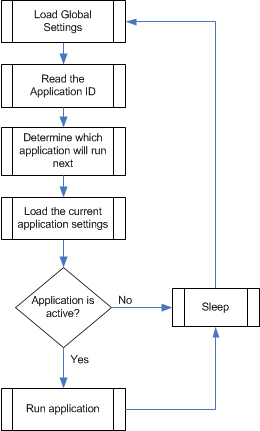Patient Reminder System
The Patient Reminder System (PRS) IVR is designed to dial customer phone numbers and play some information for them (such as an appointment reminder) based on records stored in a comma-separated value (CSV) data file.
Custom prompting provides flexibility to use the PRS for a variety of applications. As such, its usefulness is not limited to the medical services sector, despite the use of the word patient in the title.
One of the features of the PRS is its ability to handle multiple data sources, each of which may be considered a separate application. The ability to have multiple applications running concurrently—each with its own data file, configuration file and results log—provides the flexibility to support, for example, reminding patients about pending appointments for multiple doctors in the same office. In addition, there are two types of PRS application that can be used:
- Appointment notification plays a custom greeting, states the called party's appointment date and time, and then offers the person an opportunity to reschedule if needed (this may involve either recording a message or being transferred to an extension, depending on configuration). The decision of when to call the person is based on the appointment date.
- Message delivery plays a custom recording and then disconnects. As there is no associated date and time involved, the 7.00 will make the call immediately upon reading the valid record from the data file.
Caveats
Although the system's method of cycling through the applications guarantees relatively equal access to the voice lines for all configured PRS applications, there are still constraints on the system that can affect performance. Due to the use of CSV text files for the customer data, the length of time required to find a valid customer record to call will increase over time, and the larger the data file—that is, the larger the number of customers in the data file—the worse the performance will become over time. Splitting the data files over multiple applications will not alleviate this problem and may in fact exacerbate it.
Consequently, the PRS is really only recommended for situations where the data file size will not encompass much more than a few hundred customers.
Theory of Operation
The PRS requires at least one dedicated voice port, up to as many as all but one of the voice ports available in the system (at least one port must be available for handling incoming voice calls, at least for administrative purposes). All PRS applications configured on the system will use all voice ports for making calls. The PRS manages multiple applications by cycling between applications every time it makes a call-out to a customer. This is achieved by assigning each application an internal, consecutive ID number.
The flowchart below provides a basic overview of how this process works on each voice port that has been assigned the Patient Reminder application. By cycling through the applications in this fashion, each application is guaranteed equal access to the voice lines to make calls in a timely fashion.

Select one of the application types above to see what the Run application process involves, as it will vary depending on the application type.